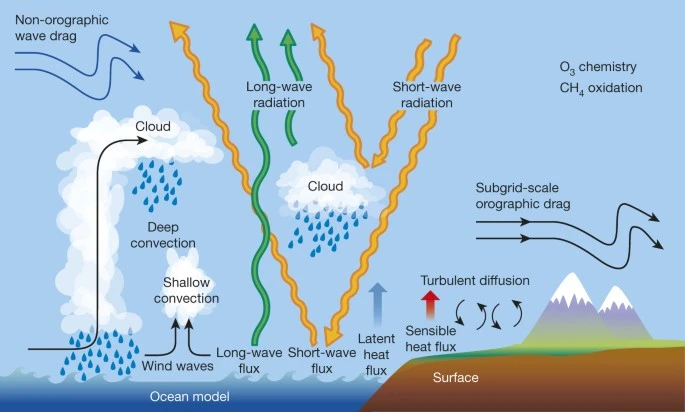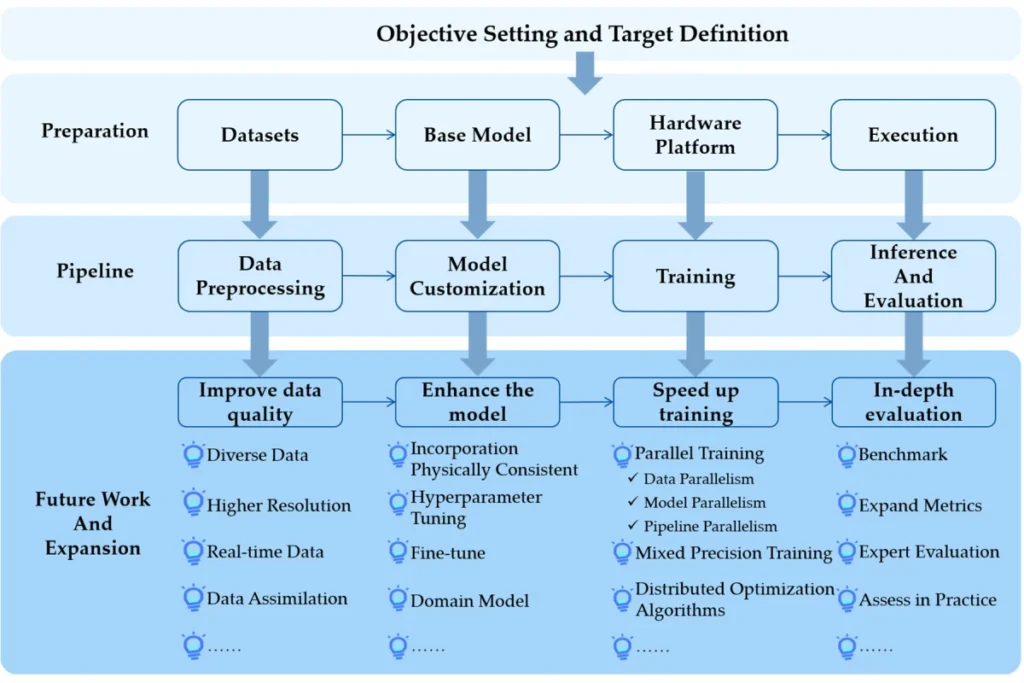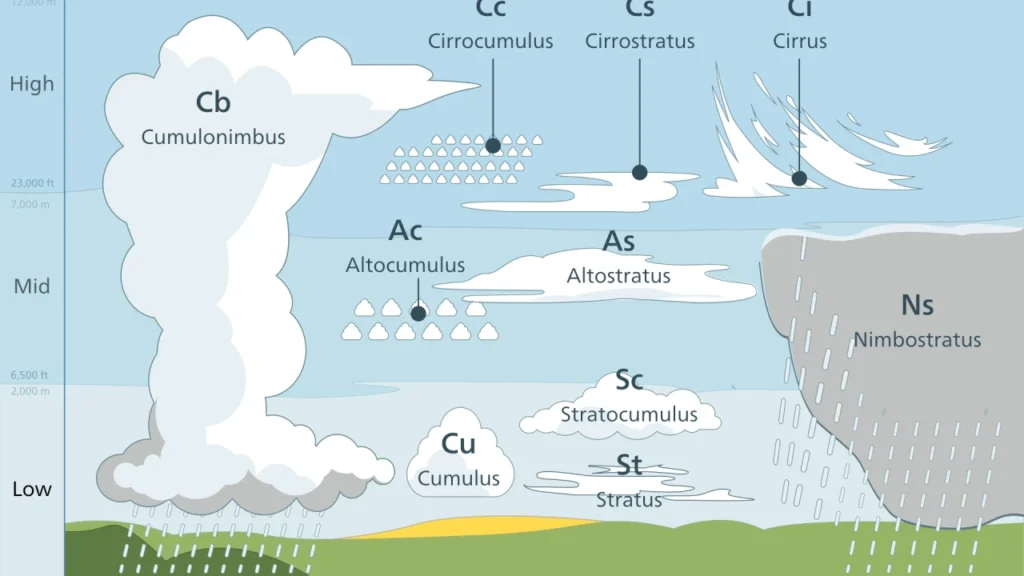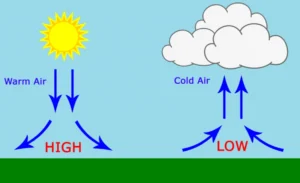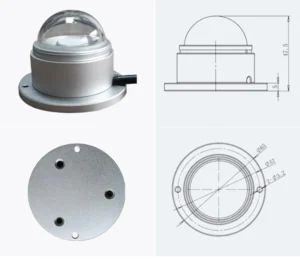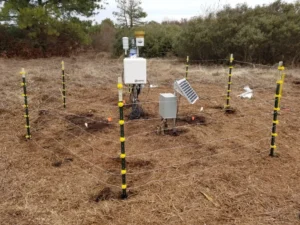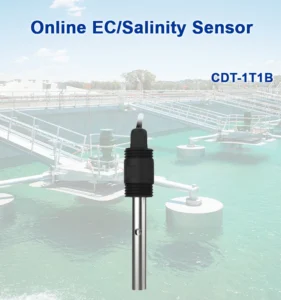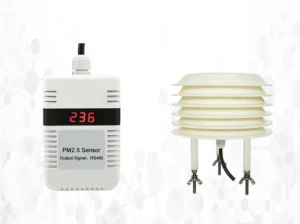The Mechanics of Weather Forecasting
Weather Forecasting help us make choices every day. They help us plan outdoor events, travel, and long-term activities. Yet many of us seldom pause to consider the complex process behind these predictions.
The science of forecasting combines advanced technology, a lot of raw data, and skilled meteorologists. This mix turns a chaotic atmosphere into clear predictions. Looking into this complex process shows how carefully each forecast is made.
To understand the details of weather forecasting, we need to look at its basic parts. This includes gathering data and using advanced models to interpret it. Each stage plays an important role in providing reliable and useful insights about future weather conditions.
The Backbone of Forecasting: Data Collection
Good forecasts rely on careful data collection. This work helps meteorologists get a clear and accurate picture of the atmosphere. This important step gathers data from many sources. It creates a clear picture of factors like temperature, humidity, wind speed, and air pressure.
Ground-level observations come from weather stations. These stations are found at airports, universities, and remote places. These stations have tools that record local changes. This helps weather experts understand details in local weather patterns.
This data is important, but forecasting needs insights from around the world. This is where satellite technology comes in.
Satellites fly high above the Earth. They give us a broad view of changing weather patterns. They help monitor cloud cover, track storm formations, and measure changes in the atmosphere around the world.
Modern satellite technologies are very advanced. They can measure temperature and moisture from space. This makes forecasts much more reliable.
Remote sensing is a valuable tool. It helps gather data from places where direct measurements are hard. This includes areas like oceans and polar regions.
Data from remote sensing and other advanced technologies is used in computer models. These models show how the atmosphere works and predict changes in the future.
Merging data from diverse sources presents its own challenges. We need to fix the differences in format and coverage. This will help make sure things work well together and stay consistent.
Data gaps must be managed well. Even with these challenges, using complete datasets is essential for accurate predictions.
Another important factor is that weather changes all the time. To solve this, meteorologists use automated systems. These systems provide constant updates from sensors and instruments worldwide. This steady flow of real-time data keeps forecasts up-to-date, timely, and accurate.
Good data collection is the base of modern weather science. It also helps make the detailed analysis needed for each forecast.
Understanding Atmospheric Models
Meteorologists rely on atmospheric models to interpret the vast amounts of data they collect. These models are complex math tools that show how the atmosphere works based on physics principles.
They show how the Earth’s atmosphere acts in different situations. This helps forecasters predict future weather patterns. They use up-to-date information for these predictions.
There are different atmospheric models. Each one is made for specific needs and situations. For example, weather prediction models split the atmosphere into a three-dimensional grid.
In this framework, they solve equations about temperature, pressure, and wind. This helps them guess how these factors will change in the future. The model’s resolution affects what it can capture. It can show local events, such as thunderstorms, or bigger patterns, like seasonal climate changes.
Meteorologists choose models based on the weather events they aim to study. High-resolution models are often used in important cases. They help track hurricanes and severe storms.
These models give more detailed predictions for specific areas. These models need a lot of computer power. They need complicated math and a lot of data.
Another common method is ensemble forecasting. This technique combines several models to improve predictions. This method considers uncertainties in variables. It runs tests by making small changes to the input data.
This leads to a range of possible outcomes. By looking at these changes, meteorologists can estimate the chances of certain forecasts. This helps them guide communities on how to get ready.
The process does not end with model outputs. Meteorologists must check how reliable and accurate these predictions are. They use their knowledge of the local weather. They also look at current trends.
This helps them choose which forecasts are most likely and important. This mix of technology and human insight helps forecasters stay on track. It also allows them to meet their audience’s needs.
The Role of Communication in Forecasting
After making forecasts from data and models, it is important to communicate clearly. It is important to show complex weather data clearly, especially during severe weather events. Meteorologists want to reach different audiences. They do this by adjusting their messages for TV, radio, websites, and mobile apps.
In traditional media, weather experts often use visuals such as maps, graphs, and animations. These help them explain things clearly when they are on air. These tools show temperature trends, radar images of rain, and storm paths. They make complex scientific details easy to understand and act on.
With the rise of social media, real-time communication has become more dynamic. Platforms like Twitter and Facebook allow meteorologists to share updates often during important weather events.
This quick response has improved how fast we react. However, it also brings challenges, such as dealing with misinformation. Meteorologists need to stay alert. They should give accurate updates and fix any false information that spreads online.
Building strong relationships with local communities is equally crucial. Meteorologists build trust and awareness through outreach programs, educational initiatives, and partnerships with emergency management services. These efforts help people get ready for severe weather. They learn what to expect and how to stay safe.
Good communication is more than just sharing forecasts. It means creating a bond with the audience. A good weather forecast can help ease worries during storms. It can also bring excitement for the sunny days to come.
Meteorologists can calm or inspire people. How they connect with the public affects how people react to weather events. They change basic weather data into useful information. This helps and supports communities.
The Impact of Technology on Forecasting
Technology has changed weather forecasting a lot over the years. High-performance computing now handles large amounts of data from many sources.
This allows for quick numerical analyses that were once not possible. These new computer advances have made forecasting much more accurate. This allows for better predictions of severe weather events and their possible effects.
Technological progress doesn’t stop there. Machine learning and artificial intelligence are now used to predict the weather. They offer new ways to analyze and predict the weather. These systems use large datasets to find patterns and relationships that traditional methods often miss.
By training algorithms on past weather data, they can improve forecasts over time. This happens when they include new information. This leads to more accurate predictions.
Mobile technology has changed how we deliver and use forecasts. Smartphones and weather apps provide you with personalized weather updates.
They include alerts that depend on where you are and notifications that come in real-time. This convenience lets people access detailed forecasts that fit their needs with just a few taps. This makes it much easier for everyone to access.
Radar technology has greatly advanced as well. Doppler radar systems help weather experts study rainfall rates, storm paths, and wind patterns in severe weather. This data is important during bad weather. It helps give timely warnings about tornadoes, flash floods, and other dangers.
These advancements have greatly improved how accurate and reliable forecasts are. New technology helps weather experts, but it cannot fully replace the skills and knowledge of experienced professionals. This mix of advanced tools and human insight creates the best forecasting systems. It helps people, businesses, and communities make good decisions based on weather forecasts.
The Future of Weather Forecasting
The future of weather forecasting holds the promise of even greater precision and innovation. As technology keeps changing, we can expect improvements in how we collect and model data. Satellite observations and ground-based measurements will likely work together more closely. This will help us understand the weather better.
Climate change brings many challenges for weather experts. As weather patterns change and become less predictable, it is more important to create reliable climate models.
Researchers are working to create tools that can analyze long-term trends. They want to assess how climate change affects extreme weather events and seasonal changes. These efforts help communities get ready for future environmental challenges more effectively.
People’s expectations of weather forecasts are changing. People want to know more than just temperatures and rainfall. They also care about climate resilience, changes in the environment, and ecological effects.
Meteorologists need to change how they share information. They should give forecasts and explain how weather affects the environment and our quality of life.
Collaboration will continue to be a key part of improving forecasting skills. Partnerships between weather agencies, governments, and local communities will help share resources, knowledge, and technology better. These efforts can create systems that improve how we prepare for and respond to severe weather events.
In conclusion
Making accurate weather forecasts needs advanced tools, weather models, clear communication, and human skill. Knowing this process helps us see how reliable the forecasts are that we use daily. It also highlights the need to adapt to the challenges of climate change and new technology.
By joining this active field, where science, innovation, and community meet, we can work toward a shared goal. This goal is to provide people with the information they need to stay safe in a changing climate.
